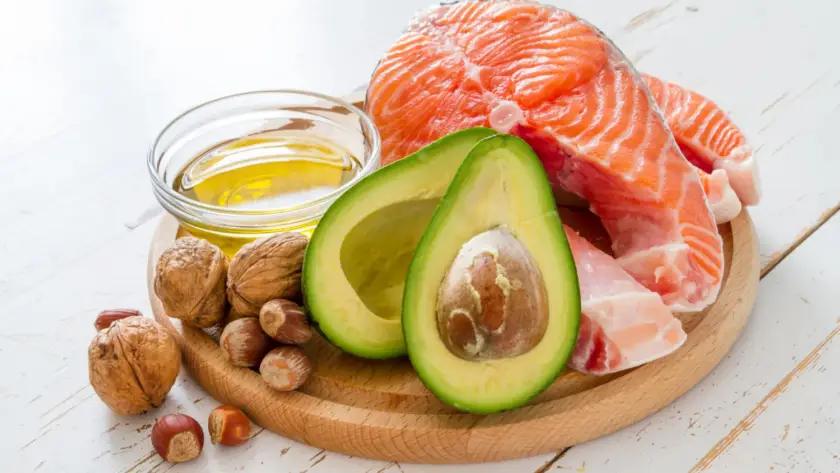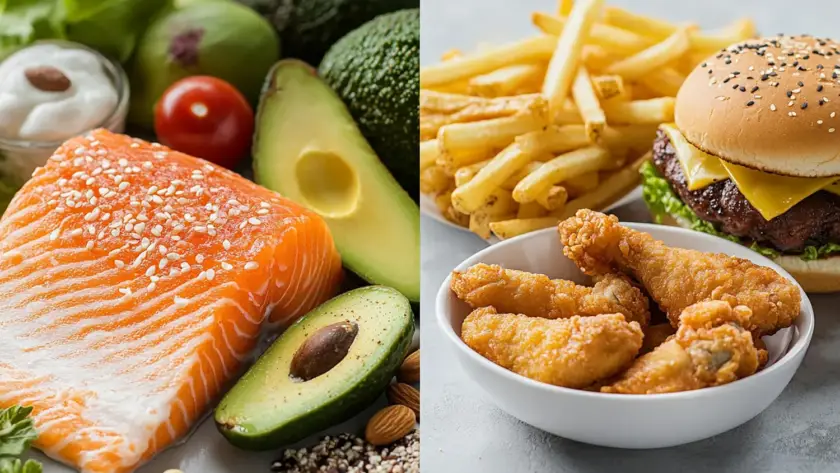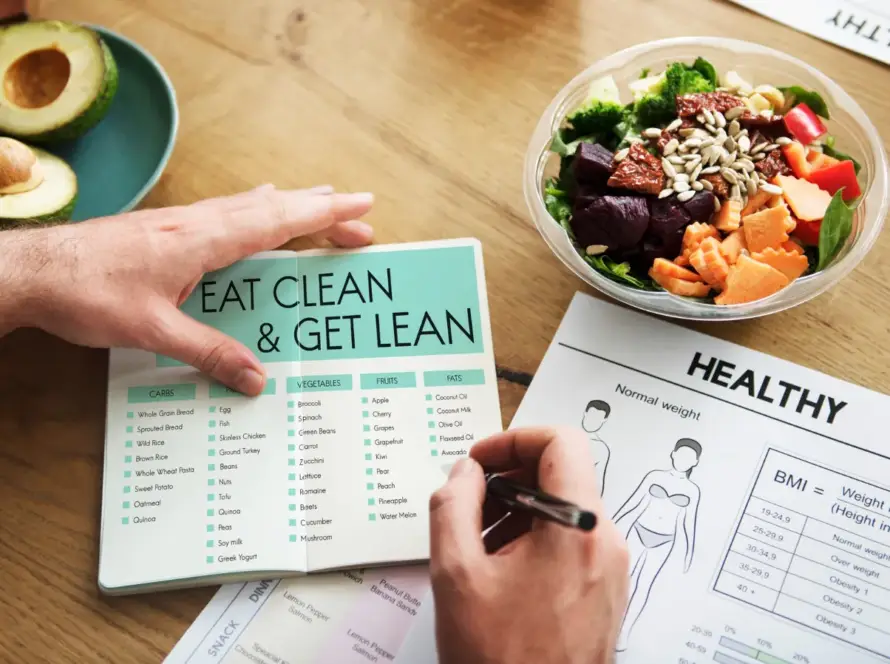For years, fats have been misunderstood often blamed for weight gain, heart disease, and poor health. But the truth is, not all fats are harmful. The difference between healthy and unhealthy fats determines whether they protect your heart or increase your risk of disease.
When I first started my fitness journey, I made the classic mistake of avoiding all fats. I soon realized that I was constantly tired and lacked energy during workouts. Once I began adding healthy fats like avocado and olive oil into my meals, my energy levels improved dramatically — proving that fats aren’t the enemy, the wrong fats are.
What Are Fats and Why Your Body Needs Them
Fats are one of the three main macronutrients — along with protein and carbohydrates — that your body needs to function properly. They serve many purposes:
-
Provide long-lasting energy
-
Support hormone production
-
Aid in the absorption of vitamins A, D, E, and K
-
Protect organs and maintain healthy cell membranes
According to dietary guidelines, about 25–35% of your total calories should come from fat ideally from healthy fat sources, including fats that help you lose weight. Too much of the wrong type, however, can lead to obesity, inflammation, and heart disease.

Healthy Fats Explained
Healthy fats are known as good fats because they support heart and brain health, boost energy, and even aid in weight management. The two main types are:
1. Monounsaturated Fats
These fats help lower bad cholesterol (LDL) and increase good cholesterol (HDL).
Examples of healthy fats (monounsaturated):
-
Olive oil
-
Avocados
-
Almonds, peanuts, and cashews
2. Polyunsaturated Fats
These include omega-3 and omega-6 fatty acids, essential for brain function, reducing inflammation, and supporting heart health.
Sources:
-
Fatty fish (salmon, mackerel, sardines)
-
Chia seeds, flaxseeds, walnuts
-
Soybean and sunflower oil
Studies from Harvard Health confirm that replacing saturated fats with unsaturated fats can lower the risk of cardiovascular disease — highlighting the importance of choosing the right types of fats.
Unhealthy Fats: The Real Problem
Unhealthy fats, often called bad fats, include trans fats and excessive saturated fats. These can raise LDL cholesterol, clog arteries, and increase the risk of heart disease.
Trans fats are the worst offenders — typically found in:
-
Packaged snacks and pastries
-
Fried foods
-
Margarine and shortening
Saturated fats, when consumed in excess, can also be harmful.
Sources:
-
Fatty cuts of red meat
-
Full-fat dairy
-
Processed meats (sausages, bacon)
👉 Explore more about balanced diets and heart health in our guide: 10 Best Weight Loss Foods to Burn Fat Fast

How to Replace Unhealthy Fats with Healthy Ones
Making small, smart swaps can significantly improve your diet.
| Unhealthy Choice | Healthy Alternative |
|---|---|
| Butter | Olive oil or avocado oil |
| Fried chips | Nuts or roasted chickpeas |
| Cream-based sauces | Greek yogurt dressings |
| Red meat | Salmon or tofu |
| Margarine | Nut butter |
Cooking with olive oil, snacking on almonds, and adding chia seeds to your breakfast can make a noticeable difference in your energy and overall health, especially when you know which fats are good for you.
🧠 Tip: For best results, combine your healthy fats with complex carbs and protein. Learn more about this balance here: Healthy Carbs vs Bad Carbs: Tips for a Balanced Diet
My Personal Experience with Fat Swaps
A year ago, I decided to replace fried snacks with a handful of walnuts and swapped creamy sauces for olive oil-based dressings. Within weeks, I noticed better digestion, clearer skin, and improved workout performance.
Healthy fats didn’t just fuel my workouts — they helped me maintain a leaner physique while keeping me satisfied for longer.
If you’re on a journey toward better health, start with one small swap. For example, switch your fried breakfast for oatmeal topped with peanut butter and chia seeds, which contain some of the best fats for heart health. You’ll feel the difference in both your body and energy.
Fats and Fitness: How They Work Together
Healthy fats play a major role in muscle recovery, joint lubrication, and hormonal balance — all vital for active individuals. They also slow digestion, keeping your blood sugar stable during workouts.
For more guidance on performance and training, check out:
Best Pre-Workouts That Really Give You Next-Level Energy
and
What Is Zone 2 Cardio? Benefits & Training 2025
Healthy Fats vs Unhealthy Fats Chart
| Fat Type | Source Examples | Effect on Health |
|---|---|---|
| Monounsaturated | Olive oil, avocado, almonds | Lowers bad cholesterol, supports heart health |
| Polyunsaturated (Omega-3) | Fish, chia seeds, walnuts | Reduces inflammation, supports brain health |
| Saturated | Butter, cheese, fatty meat | Increases LDL cholesterol |
| Trans Fats | Fried and processed foods | Increases heart disease risk |
Conclusion: Building a Balanced, Heart-Healthy Diet
The key isn’t eliminating fats — it’s choosing the right ones. Replace unhealthy fats with heart-friendly options, focus on variety, and practice moderation.
Start small — swap butter for olive oil or grab a handful of almonds instead of chips.
Your body, heart, and mind will thank you.
👉 For more healthy living inspiration, visit Health & Fitness Care and explore related guides:
FAQs — difference between healthy and unhealthy fats
Q1: What is the difference between healthy and unhealthy fats?
Healthy fats (like olive oil, avocado, and nuts) support heart and brain health, while unhealthy fats (like trans fats and fried foods) increase cholesterol and inflammation.
Q2: Are all saturated fats bad?
Not all saturated fats are harmful, but moderation is key. Excessive consumption can raise LDL cholesterol, so balance them with unsaturated fats from fish or nuts.
Q3: Can you eat fats and still lose weight?
Yes — consuming healthy fats for weight loss can improve satiety and metabolism. They help control appetite and prevent overeating.
Q4: What are some examples of healthy fats for skin and hair?
Foods rich in omega-3s and vitamin E — such as salmon, almonds, and flaxseeds — promote glowing skin and stronger hair.
Q5: What are bad fats in food I should avoid?
Avoid trans fats found in processed and fried foods, as well as excessive saturated fats from butter and fatty meats.



